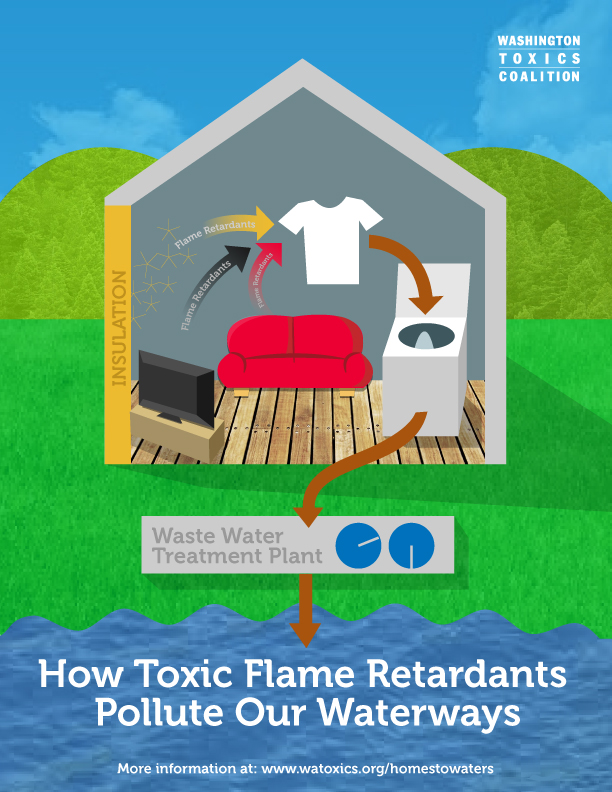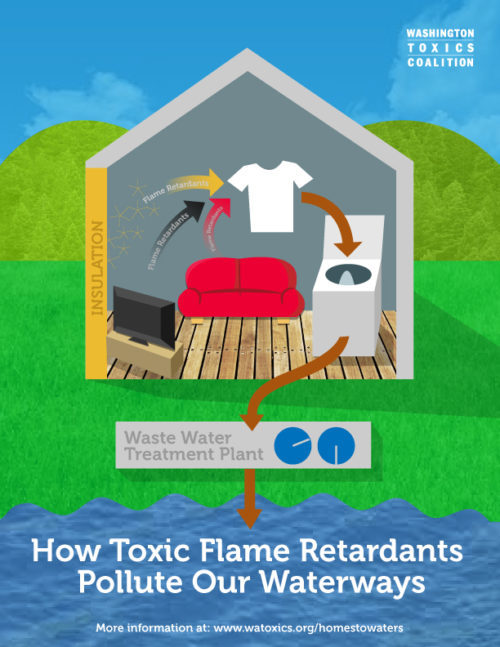Several years ago, I was presented with an amazing opportunity to do an extensive research study focusing on how toxic chemicals get out of products in our homes and make their way to our rivers, lakes, and other waters. One of our coalition partners, Columbia Riverkeeper, had made the funding possible so that we could really dig into this question.
After months of literature searching and planning, I decided to focus on a class of chemicals found in many products in our homes and turning up unexpectedly in surface water, sediment, fish, wildlife, and even orcas—flame retardants. I’ve been working to tackle the problem of toxic flame retardants for more than ten years, ever since I found out they were in my breast milk and widely contaminating people, fish, and wildlife.
For this study, published today in the peer-reviewed journal Environmental Science & Technology, we recruited 20 households in two communities whose wastewater treatment plants discharge to the Columbia River. We wanted to see if we could find the missing link in the pathways for flame retardants to get from products in our homes to the river. We know they are used in our couches, televisions, and insulation; we know they are in our household dust and that they are discharged from wastewater treatment plants. But how do they get from the couch to the treatment plant?
To find out, we took household dust samples from each of the 20 homes. We also asked participants to collect a load of clothes worn around the home, because we thought laundry might be the missing link—flame retardants from house dust and indoor air build up on clothes, then literally come off in the wash. When we visited the homes, we did a load of laundry and took a water sample to see what came off. We also took samples of sewage entering wastewater treatment plants, and the effluent leaving after treatment.
We found that flame retardants are unwanted hitchhikers on our clothes and that they are being discharged to waters in large quantities. We found 21 flame retardants in household dust, and 18 in laundry water. When we compared the levels in the laundry water to what we found entering wastewater treatment plants, we concluded that flame retardants in laundry water are likely the most important source to treatment plants.
And wastewater treatment plants are a big source: our study estimates that just one treatment plant discharges 384 pounds per year of one type of flame retardant, the chlorinated organophosphates (also known as Tris compounds). Since the U.S. generates more than 85 trillion liters of wastewater annually, if the levels detected at this plant are typical then 1 – 4 % of the annual production of two of these compounds is actually being discharged every year—more than one million pounds.
This pollution is preventable. With these results, we can see the urgent need to get these toxic flame retardants out of products, and make sure the materials or chemicals used to replace them are safer. U.S. Senator Chuck Schumer has now introduced legislation to ban ten toxic flame retardants used in the home and make sure they aren’t replaced with other toxic chemicals—a good start to stopping this pollution where it starts.





